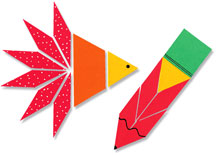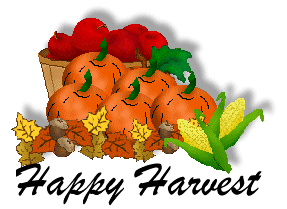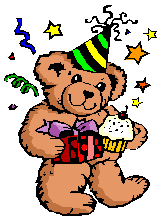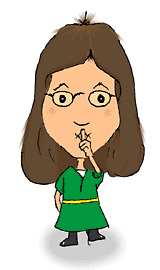To make this game, print all pages on cardstock and laminate (recommended but optional). You will need one fence mat and a sheet of pumpkin cards for each player. To make the fence mat, fold the sheet on the dotted line. Next, cut around the bottom fence pieces so that each piece is attached to the sheet only at the dotted line (so that it can be folded up to cover a number). Place a tiny piece of Velcro on each rectangle (soft side on the bottom and rough on top). Cut the pumpkin cards apart. Laminate these cards if desired. To play, give each player a game mat. Place the pile of pumpkin cards face down on the table in the middle. Players take turns choosing a pumpkin card and covering the matching number on their fence. If the number is already covered, they can pass the card to another player who needs it. Continue playing until someone covers his entire fence.
*I've included both a Halloween Mat and a Fall Mat since some schools don't allow Halloween items. The games are identical except for the clip art used.

Print all pages on cardstock and laminate. Students use pattern blocks to recreate the images.

To make this game, print all pages on cardstock. Leave the playing mats whole (ones with bears on them). Laminate or place in sheet protectors (optional). Cut the number cards apart. Laminate these cards if desired. To play, give each player a game mat (up to 6 players). Spread the number cards face down on the table in the middle. Players take turns choosing a number card. If they have a matching set on their mat, they place it in the correct space. If not, put it in the discard pile. Play continues until someone covers all the sets on the mat.

To make the puzzles, print all pages on cardstock. Cut apart the puzzles pieces and laminate (optional).
These puzzles include AB, AAB, ABB, and ABC patterns. They are designed to help children see the "units" in each pattern.

To make this game, print all pages on cardstock. Leave the playing mats whole (ones with bears on them). Laminate or place in sheet protectors (optional). Cut the last sheet (with random numbers) apart so that each number is a small square. Laminate these squares if desired. To play, give each player a game mat (up to 6 players). Spread the number squares face down on the table in the middle. Players take turns choosing a number square. If they need it to complete their 100s chart, they place it in the correct space and take another turn. If not, they call out the number and give it to the player who needs it. Play continues until someone completes his or her 100s chart by covering all the "balloon" spaces with the missing numbers.
To make this game, print one page for each player on cardstock. Cut on the dotted line. The top half is the playing mat. Cut the numbers apart on the lower half. These will be the number cards. Laminate as desired. To play, place the number cards in a pile face down in the middle. Players take turns choosing a card. If they need the number to complete their sequence to 10, they place it in the correct place. If not, they place it face up on the discard in the middle of the table. The next player can choose this card (if he needs it) or draw from the pile. Play continues until someone completes a sequence of numbers from 1 to 10.
*There are two versions of this game: one will blank game mats and the other with game mats that have some numbers filled in to guide children. Choose the one that is most appropriate for your children.

This game is designed to practice addition skills. Children should be somewhat familiar with addition before playing. Print one set of game mats (enough for 6 players) and one set of number cards (pages 2-5 ONLY). Then reinsert the number card pages into your printer so that you can print Buzz Light Year (page 1 ONLY) on the back (or use your printers double-sided feature if it has one). Cut apart number cards. Laminate the game mats or place inside plastic protectors. To play, children take turns choosing 2 Buzz cards. The child adds the numbers together and if he has the matching sum on his game mat, he places the cards on the mat. If not, he discards them. Play continues until one player fills his game mat. This player wins.

This game is designed to practice addition skills. Children should be somewhat familiar with addition before playing. Print one set of problem cards and one set of answer cards. Cut apart both sets. To play, deal 5 answer cards to each player. The player should not show each other their cards. Show the group an addition problem. Children solve the problem and if they have the matching answer card, they place it face down on the table. When you call "secrets out", the children flip their cards. Those with the correct answer get to discard that card. Play continues until one player gets rid of all cards to win.

The set included cards for patterning (AB, AAB, ABC), sorting, and adding.
*To print these, use the Adobe printer icon shown on the page. Do NOT use "file-print" (this will get you a blank page).*
![]()
To review basic addition, I added these cards to my play dough center. The children used seasonal cookie cutters to solve the problems and then cut the answer out of play dough using number cookie cutters. Be sure to laminate so that the play dough will wipe off easily!

To create this activity, you will need to purchase small apple counters. OR...visit the Dollar Tree and purchase medium size cranberry sprigs (in the Christmas section). Cut the cranberries off of the wires and VOILA you have apple counters! This sheet is also a template to save space. Simply change the number in the basket to create a complete set.

You will need small fish counters or sea creatures to play this game. I bought 2 packages of plastic sea creatures at the Dollar Tree. Put all counters in the middle of the table. Each player gets one fish tank (download above). Players take turns rolling a numeral die (not the kind with dots) and placing that amount of fish in their fish tanks. The first person to fill his tank (reach 20) is the winner.

I designed this activity as an independent center for my children. It has several levels all designed to reinforce money recognition. To make the center, you will need 4 plastic wallets. I bought mine at the Target $1 Spot (July 2005). They are vinyl and have a bee on the front. You will also need some type of clear plastic (you could use scraps of laminating or the plastic pockets from cheap photo albums. Cut the plastic to about 2" high and 4" wide. Use packing tape to secure the plastic to the wallets...LEAVE THE TOP OPEN like a pocket. Print out the money sort cards (above) and cut to fit your pockets. Slip them in the pockets ( I store all levels in the pockets and just put the current level facing out. To use the center, children sort plastic coins into the correct wallets.

Print the mice out (above) on cardstock and cut them out. If they have a tail, be sure to CUT IT OFF!. Laminate the mice (actually I double laminated mine). Poke a small hole in each mouse and tie various lengths of yarn onto them for tails. To use this center, children use non-standard measurement tools (inch tiles, connecting cubes, etc) to measure the length of each mouse's tail.
*An alternative to printing and laminating the mice is to buy cat toys shaped like mice. Cut the tails to various lengths. Use hot glue and yarn to make longer tails. (Click here for a photo of the mice)*
You will need 2 packages each of plastic baby bottles and plastic diaper pins (one pink and blue of each). I found these in the party goods section of the Dollar Tree (they are intended for baby showers).
The set included cards for patterning (AB, AABB, ABB, AAAB), sorting, and subtracting.
*To print these, use the Adobe printer icon shown on the page. Do NOT use "file-print" (this will get you a blank page).*
You will need tiny Christmas decorations or confetti to make this activity. I found "sturdy" confetti in the party goods section of the Dollar Tree (they come in square boxes and are available in several shapes...I am using plain circles for this activity). Print the Christmas trees out (above) on cardstock and cut them out. To use this center, children read the number on the present and place that many Christmas decorations on the tree.
Froot Loops (Froot Loop Pattern Cards)
This game is designed to practice patterning skills. To make the game, print out several of the Froot Loops sheets and cut apart. Place all pieces in an empty Froot Loops box. Print out one set of the Froot Loops pattern cards (you may want to laminate these). Make a dice that has the numbers 1, 2, and 3 on the sides. To play, give each child one pattern card. Each player takes a turn rolling the dice and drawing that many Froot Loops out of the box. If he needs them to complete his pattern he places them on his pattern card; if not, he puts them back in the box. If a player draws a Toucan Sam card, he gets to take another turn. The first player to complete his pattern (cover up all circles AND continue the pattern to fill in the blanks) is the winner.
This activity uses plastic "ice cubes" from Dollar Tree. These ice cubes come in various shapes/colors. For this activity, I bought fruit slices, flowers, fish, and shells. Print and laminate the sorting directions (above). Hang them near your water table (or bucket). Dump all of the ice cubes into the water. Have children sort them by color and/or shape.
This game uses small yellow gems for gold (Dollar Tree or craft store). You will also need 4 or 5 "treasure boxes". The ones in the picture came from Dollar Tree (in the summer section near the front). You could also purchase the small wooden boxes from a craft store. To play, the children roll a die (the kind with numerals not dots) and place that number of gems in their treasure box. Play continues until all of the gems are gone. The player whose treasure box is filled most wins.
Search for additional math games or themed materials: